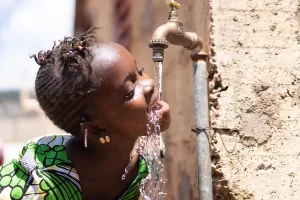In the aftermath of natural disasters and emergencies, ensuring access to safe drinking water is paramount.
Contaminated water supplies pose significant health risks, increasing the challenges faced by affected communities.
Chlorine Dioxide (ClO2) has emerged as a critical tool in disaster recovery and emergency water purification, offering a rapid and effective solution for ensuring water safety during crises. This article explores how Chlorine Dioxide can be deployed in disaster-stricken areas to purify water supplies and support emergency response efforts.
The Importance of Safe Water in Disaster Recovery
 Access to clean water is essential for survival and maintaining health in disaster-affected regions. Contaminated water can lead to outbreaks of waterborne diseases such as cholera, dysentery, and typhoid fever, which can further strain healthcare resources and impede recovery efforts. Thus, restoring safe water supplies is a top priority for emergency responders and humanitarian organisations.
Access to clean water is essential for survival and maintaining health in disaster-affected regions. Contaminated water can lead to outbreaks of waterborne diseases such as cholera, dysentery, and typhoid fever, which can further strain healthcare resources and impede recovery efforts. Thus, restoring safe water supplies is a top priority for emergency responders and humanitarian organisations.
Challenges in Emergency Water Purification
Disaster situations often result in the disruption of water infrastructure, making it difficult to access and distribute clean water. Common challenges include:
- Contamination: Floodwaters and damaged infrastructure can introduce pathogens, chemicals, and debris into water supplies.
- Logistical Barriers: Transporting and distributing clean water can be challenging due to damaged roads and infrastructure.
- Resource Limitations: Limited availability of water treatment resources and equipment can hinder the ability to provide safe water.
How Chlorine Dioxide Works
Chlorine Dioxide is a powerful oxidising agent capable of destroying a wide range of pathogens, including bacteria, viruses, and protozoa. It works by disrupting the cell walls of microorganisms, rendering them inactive and preventing the spread of waterborne diseases. Unlike chlorine, ClO2 is effective at lower concentrations and does not produce harmful by-products, making it safer for both human health and the environment.
Rapid Deployment of Chlorine Dioxide in Emergencies
Chlorine Dioxide can be rapidly deployed in disaster-stricken areas to purify contaminated water supplies. Key advantages include:
- Ease of Use: ClO2 can be generated on-site using portable equipment, making it ideal for emergency situations where infrastructure is compromised.
- Effectiveness in Turbid Water: ClO2 remains effective in the presence of organic matter, which is common in contaminated water following a disaster.
- Versatility: ClO2 can be used to treat water from various sources, including rivers, lakes, and wells, providing flexibility in emergency response efforts.
Applications of Chlorine Dioxide in Disaster Recovery
- On-Site Water Treatment: Portable ClO2 generators can be deployed to treat large volumes of water quickly, ensuring that affected communities have access to safe drinking water.
- Disinfection of Water Distribution Systems: ClO2 can be used to disinfect damaged water distribution systems, preventing the spread of pathogens as water services are restored.
- Decontamination of Medical Facilities: Ensuring clean water in makeshift medical facilities is crucial for treating injured individuals and preventing infections.
Scotmas’s Contribution to Emergency Water Purification
Scotmas specialises in providing advanced Chlorine Dioxide solutions tailored for emergency situations. Our portable ClO2 generators are designed for rapid deployment, ensuring that clean water is available when it is needed most.
Chlorine Dioxide plays a vital role in disaster recovery and emergency water purification. Its effectiveness, ease of use, and safety make it an indispensable tool for ensuring access to clean water in crisis situations. Contact us for more information on how Chlorine Dioxide can support your emergency response efforts.






